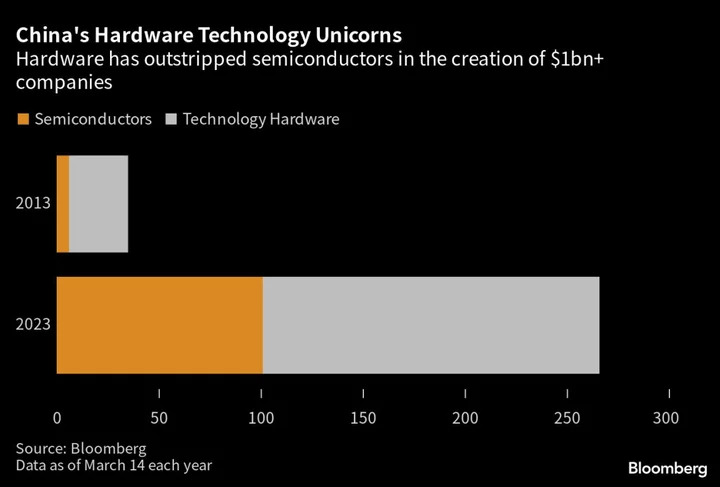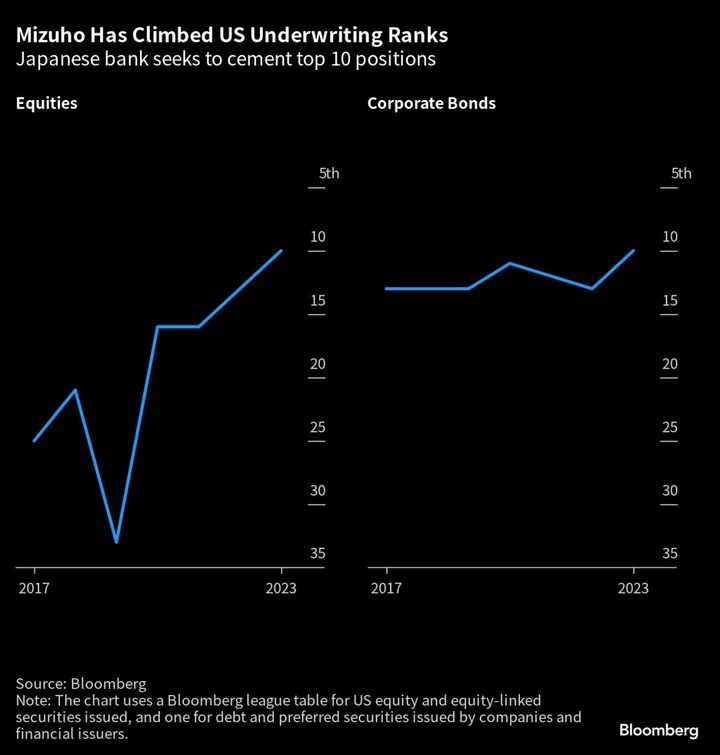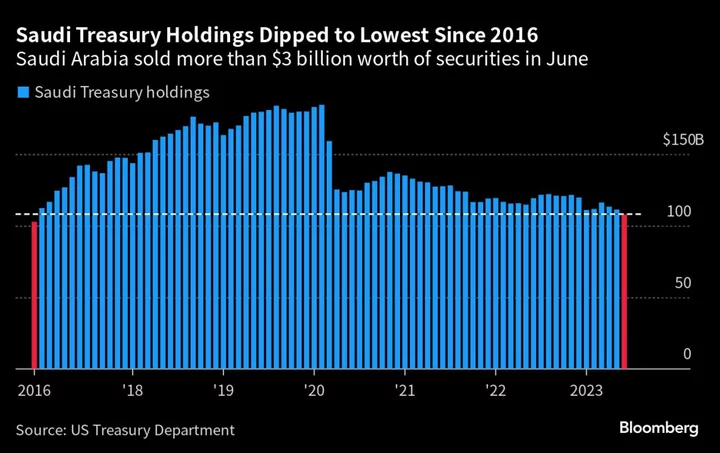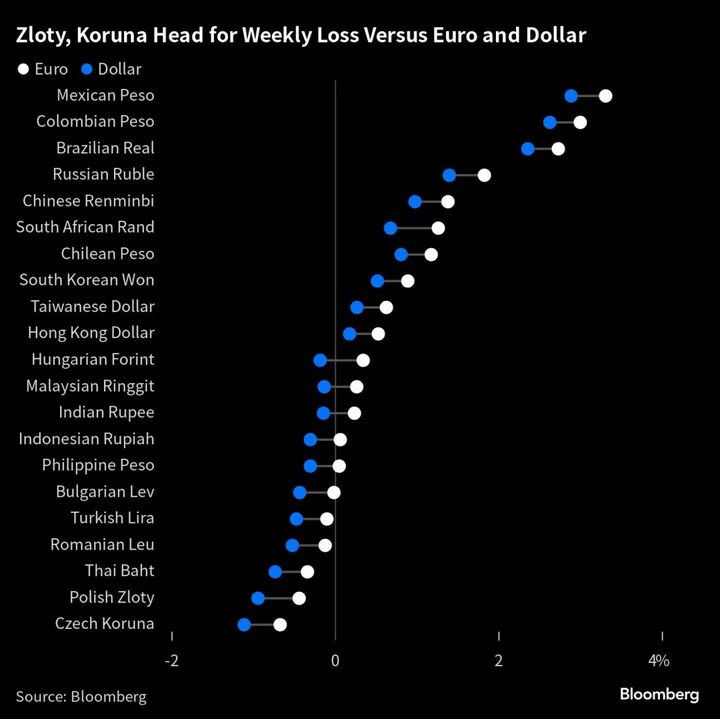Chinese leader Xi Jinping has used policy, capital and outright decree to mold the world's No. 2 economy in his own image. After over a decade in power, an intensifying struggle for tech leadership with the US and a sputtering domestic economy suggest he'll have to once again recalibrate the country's giant internet and manufacturing sectors.
The 69-year-old leader has a complex relationship with his domestic tech sector. Xi has made science and technology pillars of his long-term vision for China's national wellbeing, and he's placed a priority on researching homegrown alternatives to foreign-made semiconductors to ensure reliable supply. The latest salvo: Beijing this week barred Micron Technology Inc. memory chips from sensitive infrastructure applications.
But under his watch, China's internet sector has also been put through a punishing, two-year crackdown curbing the excesses of so-called disorderly growth of capital. A dichotomy has emerged in his treatment of hardware manufacturing and online services.
Now the focus is shifting to artificial intelligence — something experts on both sides of the Pacific equate in game-changing significance to the introduction of the internet and the iPhone. To see if there are any clues for investors looking to stay ahead, we’ve analyzed listed companies with no less than $1 billion in market cap during each year of his reign to see just how Xi has reshaped the contours of China’s sprawling tech sector.
Show Us the Money
One of the starkest transformations can be seen in the wealth of Chinese hardware makers — a testament to Xi’s express intention of maintaining China’s lead in worldwide electronics manufacturing. These are mostly state-backed firms that make servers, PCs, phones and networking equipment and concentrate on local markets.
The combined cash load of the most valuable hardware companies ballooned from around $20 billion in 2013 — when Xi first became president — to more than $100 billion today, according to data compiled by Bloomberg News.
Somewhat surprisingly, the highly touted semiconductor sector hasn’t seen anything like the same explosion of cash reserves. That’s because many domestic chipmakers focused on lower-margin, more mature arenas and their coffers only began growing in earnest after the global semiconductor shortages of 2020 buoyed prices.
In contrast, internet companies from Alibaba Group Holding Ltd. to Tencent Holdings Ltd. accumulated wealth at a rapid clip through their control of booming spheres of business from online retail to social media. Their growth went into hyperdrive after Alibaba’s then-record 2014 IPO attracted the attention of global investors. That went on until Beijing in 2020 pulled the plug on a very similar debut — that of Jack Ma’s Ant Group Co. — and the now-infamous Covid Zero nationwide lockdown the year after hurt their businesses.
Still, by dint of years of free-wheeling expansion, Alibaba and Tencent continue to have the deepest pockets of all, piling up roughly $28 billion and $23 billion, respectively — each more than the first two hardware firms BOE Technology Group Co. and Foxconn Industrial Internet Co. combined.
“Regulatory risks in China have eased with the government prioritizing economic growth,” said Cecilia Chan, an analyst at Bloomberg Intelligence. “Intense competition might lead to higher marketing costs, but they should be able to defend their strong market position with their large user and merchant bases, better tech capabilities and competitive advantages, amid the gradual consumption recovery.”
Breeding Unicorns
When it comes to the number of companies that exceed the magical (if somewhat arbitrary) $1 billion valuation threshold, it’s again the hardware sector that’s sitting pretty.
Listed hardware and semiconductor unicorns have increased seven-fold in the past decade, making the sector the biggest source of tech giants. Software and tech services have also grown notably as natural corollaries to hardware proliferation — just not as much — while the media sector rode a boom in gaming and business such as live-streaming in the Netflix era.
The retail sector failed to spark as many large firms and remains dominated by Alibaba.
Years of state investment in the semiconductor industry haven’t yielded a huge increase in the number of listed unicorns. That highlights the challenges of developing, funding and building chipmaking capabilities. But it also reflects the way many of China’s most advanced, state-backed semiconductor players — such as Yangtze Memory Technologies Co. or AI chipmaker Biren Technology — have shunned IPOs and the scrutiny they command.
Brass Tacks: Valuation
Ultimately, investors care about the price tags of what they buy (or shun). The hardware-internet dichotomy is again quite apparent in the market valuations of both segments. Despite initial ebullience around China’s post-Covid reopening and incessant pledges of support from Xi and his cadres, the total market cap for industries dominated by the internet giants has barely regained its pre-crackdown, pre-pandemic 2019 level.
Tech hardware and chips, on the other hand, continue to scale new heights — with one important caveat.
The semiconductor industry cratered around 2021, bogged down by a combination of Covid controls, a growing surplus of certain chips such as memory, and escalating US efforts to choke off Chinese access to the technology, tools and software it desperately needed.
“The US could add more AI-related Chinese companies to the sanction list,” Jefferies analyst Edison Lee wrote in a recent note to clients. “We also expect the US Congress (esp. the Republicans) to come up with more aggressive bills against China in the next two quarters.”
Buyer, beware.
Back to the Science
To many, it’s the contours of research and development that’s been the defining change during Xi’s tenure, when Beijing repeatedly hammered home the need for basic scientific innovation to really get ahead of the US. It’s all part of a national self-reliance drive, an urgent need (from China’s perspective) to develop alternatives to American technology that can finally sever its dependence on the West.
The hefty research spending of Chinese telecom gear mammoth Huawei Technologies Co. wasn't included because it's a privately-held company. It spent more than 160 billion yuan ($22.7 billion) in R&D last year despite the harm that US blacklisting did to its sales.
On the surface, the right conditions are in place for China to rally its engineering and manufacturing industries. Hardware companies led all sectors in total research expenditure. ZTE Corp., Xiaomi Corp. and BOE are among the biggest spenders as they expand in 5G gear, smartphones, EVs and next-generation display technologies, respectively.
That’s not to say internet firms are slouches when it comes to the lab. Despite government probes, the biggest of the big internet companies remain standout spenders: Tencent and Alibaba both spend annually over $8 billion a piece, easily dwarfing No.3 Baidu, which spent about $3.5 billion on research. Other names including Kuaishou and Meituan also outspent rivals after hiring large numbers of developers for live streaming, AI and food delivery algorithms.
This may be what it boils down to. Over Xi’s next term — or terms — fundamental research could mark the frontlines of China’s ever-expanding tech war with the US. As Xi himself said at the October opening of the Communist Party’s twice-a-decade congress in Beijing — the one at which his reign was extended: “We will focus on national strategic needs, gather strength to carry out indigenous and leading scientific and technological research, and resolutely win the battle in key core technologies.”
MethodologyBloomberg News analyzed four industry group classifications which capture different aspects of China’s technology universe: Discretionary retail and wholesale (which while it captures some non-tech-focused retailers also includes major internet operators like Alibaba), media (which includes app giant Tencent), technology hardware and semiconductors, and software and tech services. We restricted our analysis to companies domiciled in China and with market capitalizations of at least $1 billion on each anniversary of Xi’s elevation.









